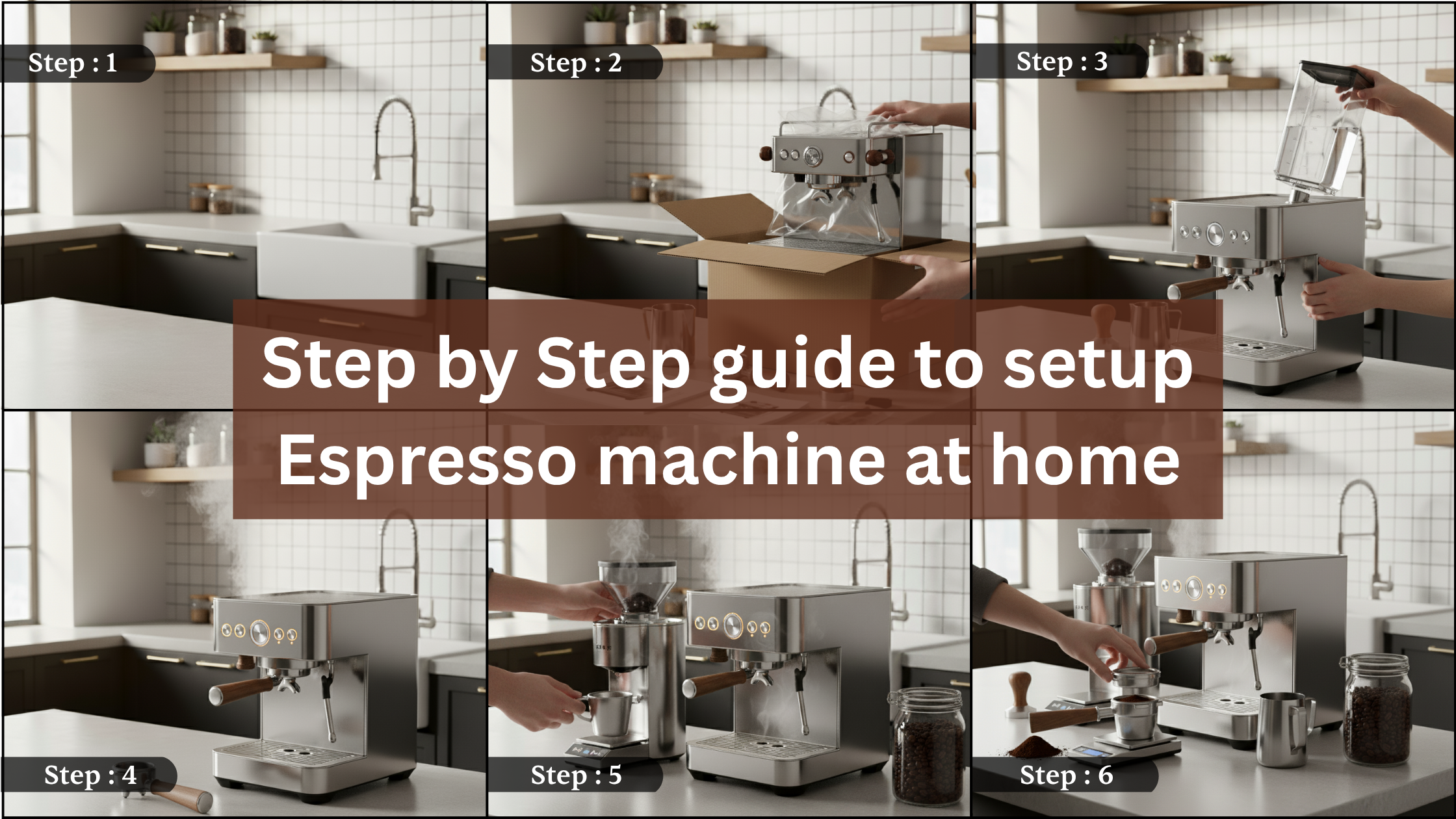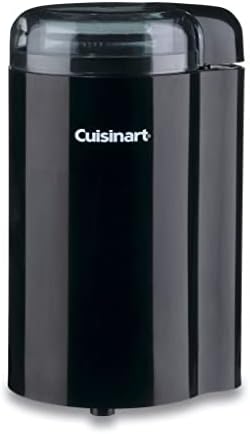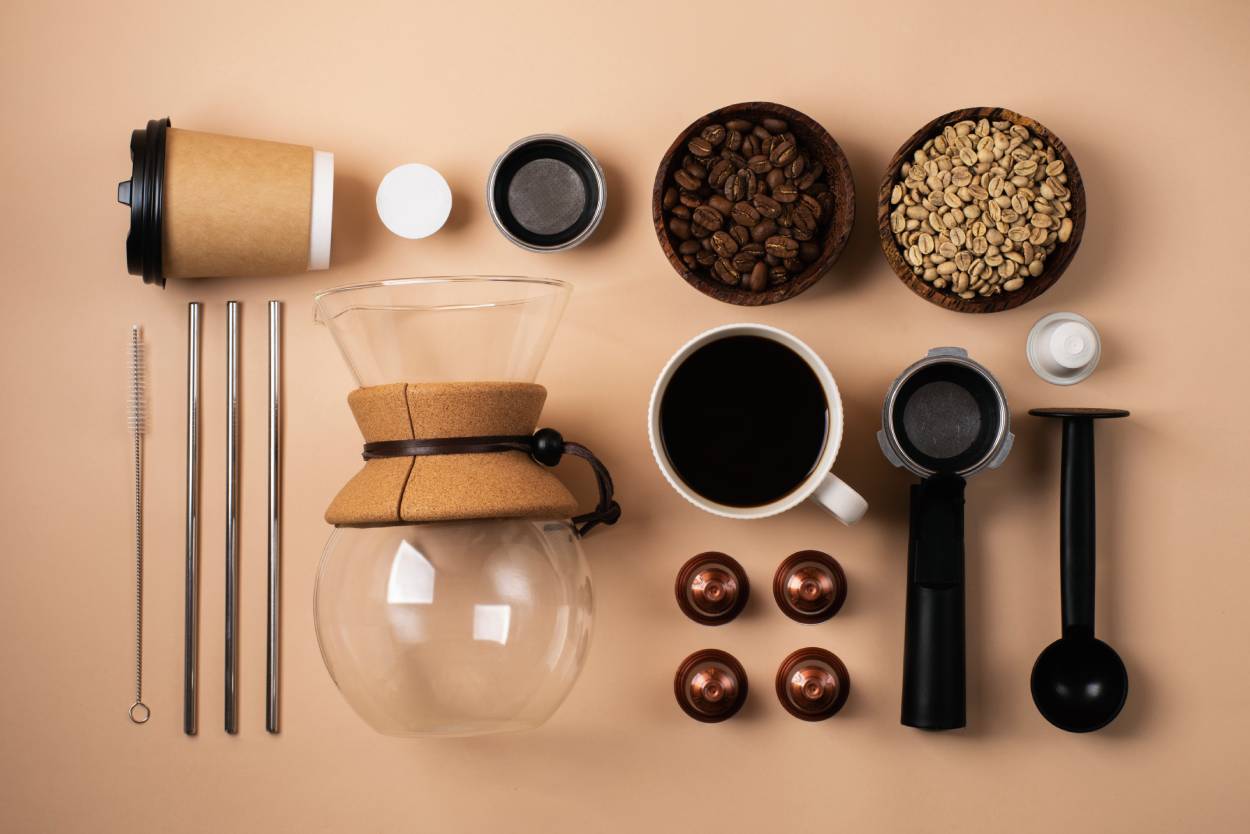
7 Simple Steps for Espresso Machine Setup in Your Kitchen
Table of Contents
7 Simple Steps for Espresso Machine Setup in Your Kitchen
- azeem memon
- 24-10-2025
- 24-10-2025
- 164 views
- Coffee Machine, How To's

Setting up an espresso machine in your kitchen might seem intimidating at first, but with the right guidance, it’s easier than you think. Whether you’re a coffee enthusiast eager to make professional-quality espresso or a beginner just getting started, the espresso machine setup is the first step toward crafting your perfect cup. In this step-by-step guide, we’ll walk you through everything you need to know, from choosing the right location for your machine to preparing your first shot of espresso. By the end, you’ll have all the tools and knowledge to set up your espresso machine like a pro and start enjoying rich, flavorful coffee at home.
Step 1: Choose the Right Location for Your Espresso Machine
Before you start setting up your espresso machine, it’s important to pick the right spot in your kitchen. The placement of your machine will affect both the ease of use and the overall brewing experience. Here’s what you should consider:
- Counter Space: Espresso machines come in various sizes, so ensure you have enough space on your countertop. You’ll also need room for accessories like a grinder, tamper, and milk frothing tools.
- Power Outlet: Ensure the location is close to a power outlet. Most espresso machines require a grounded electrical connection, so check the voltage requirements in the manual.
- Water Source: Some espresso machines have a built-in water tank, while others may require plumbing. If your machine has a water tank, make sure it’s easy to refill. If it’s plumbed in, ensure the connection to your home’s water supply is secure and doesn’t cause leaks.
Tip 💡: Keep your machine away from heat sources like stoves or ovens, as direct heat can cause the machine to overheat and shorten its lifespan.
Step 2: Unbox and Inspect Your Espresso Machine
Now that you’ve chosen the perfect spot for your espresso machine, it’s time to unbox and inspect it. Here’s what you need to do:
- Check for Damage: Carefully remove the machine from the box and check for any visible damage that may have occurred during shipping. If you find any issues, contact the manufacturer for support.
- Read the Manual: Even if you’re familiar with espresso machines, it’s important to review the user manual. Every machine is different, and there might be specific instructions for setup, maintenance, or safety features.
- Gather the Accessories: Ensure you have all the essential parts, including the portafilter, drip tray, water reservoir, and any other attachments. Some machines also include accessories like tampers, milk frothing pitchers, or cleaning brushes.
Step 3: Set Up the Water Reservoir
Most home espresso machines rely on a water reservoir, so setting it up correctly is a crucial step in your espresso machine setup process.
- Fill the Water Tank: Remove the water tank from the machine and fill it with clean, filtered water. Avoid using distilled or soft water, as it can affect the taste and longevity of the coffee.
- Reattach the Reservoir: Once filled, securely place the water tank back into the machine, ensuring it’s properly seated.
- Rinse the Machine: Before using the machine for the first time, run a water-only cycle through it. This helps clear out any manufacturing residues and primes the machine for brewing.
Tip 💡: Always use filtered water to improve the flavor of your coffee and reduce the buildup of mineral deposits inside your machine.
Step 4: Power Up Your Espresso Machine
With your machine set up and the water reservoir in place, it’s time to plug it in and turn it on:
- Connect to Power: Plug the machine into an outlet and ensure it’s connected to a stable power source.
- Turn on the Machine: Most espresso machines have a power button. Once you power it up, the machine may need a few minutes to warm up. During this time, let the machine cycle to reach the correct brewing temperature.
Tip 💡: Many espresso machines have an automatic warm-up feature, but check the manual for any specific instructions.
Step 5: Prepare Your Coffee Grinder
To brew a perfect shot of espresso, you’ll need freshly ground coffee beans. Here’s how to set up your grinder:
- Adjust the Grind Size: The grind for espresso should be very fine, almost like powdered sugar. If you’re using a burr grinder, set it to the finest level.
- Measure the Coffee: A standard double shot of espresso requires about 18–20 grams of coffee. Use a scale to measure the beans accurately for the best results.
- Grind the Coffee: Grind the coffee immediately before brewing to preserve its freshness and aroma. Freshly ground coffee is key to making a great shot of espresso.
Tip 💡: If you’re new to espresso, experiment with the grind size. A finer grind will slow the extraction and give you a richer flavor, while a coarser grind may result in a watery shot.
Step 6: Set Up the Portafilter
Now that you have your ground coffee ready, it’s time to prepare the portafilter:
- Place the Portafilter on the Scale: If you’re using a scale, place the portafilter on it and measure out the appropriate amount of coffee (18–20 grams for a double shot).
- Distribute the Coffee Evenly: Use your finger or a distribution tool to evenly spread the coffee grounds across the portafilter basket. An even distribution helps ensure uniform extraction.
- Tamp the Coffee: Use a tamper to compress the coffee grounds into the portafilter. Apply even, firm pressure to ensure that the coffee is compacted properly. A good tamp is crucial for a consistent shot.
Tip 💡: A level tamp helps create a uniform extraction, preventing channels where water could flow through too quickly, which would result in a bitter or under-extracted shot.
Step 7: Brew Your First Shot of Espresso
With the portafilter filled and tamped, it’s time to brew:
- Lock the Portafilter into the Machine: Insert the portafilter into the group head and twist it to secure it in place.
- Start the Brew Cycle: Press the brew button to start the espresso extraction. A well-pulled shot should take around 25–30 seconds. You should see a steady stream of espresso pouring from the portafilter, and it should be rich and creamy with a golden crema on top.
Tip 💡: If your shot brews too fast or too slow, adjust the grind size or tamp pressure. The ideal shot will have a smooth, balanced taste.
Conclusion
Setting up an espresso machine in your kitchen can be a rewarding experience, allowing you to enjoy café-quality coffee from the comfort of your home. By following these simple steps, you’ll be able to brew rich, flavorful espresso shots in no time. Remember, the key to a great espresso is consistency, so take your time with each step and enjoy the process. With regular cleaning and maintenance, your espresso machine will serve you well for years to come.
If you’re a coffee lover, make sure to explore all things coffee-related at our marketplace, Lovers.Coffee. For more health tips and tasty ideas, be sure to check out our blog!






















